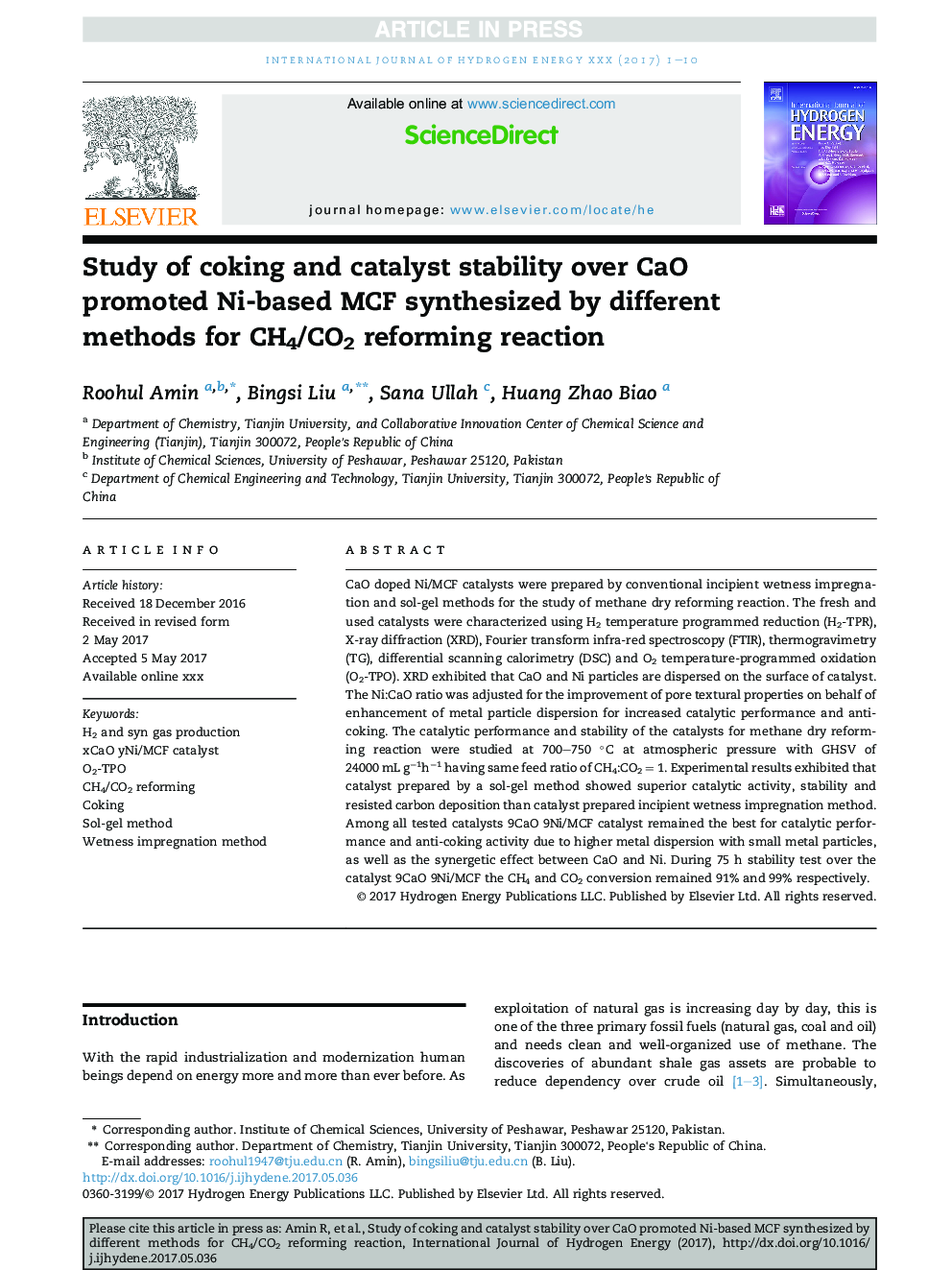| Article ID | Journal | Published Year | Pages | File Type |
|---|---|---|---|---|
| 5145876 | International Journal of Hydrogen Energy | 2017 | 10 Pages |
Abstract
CaO doped Ni/MCF catalysts were prepared by conventional incipient wetness impregnation and sol-gel methods for the study of methane dry reforming reaction. The fresh and used catalysts were characterized using H2 temperature programmed reduction (H2-TPR), X-ray diffraction (XRD), Fourier transform infra-red spectroscopy (FTIR), thermogravimetry (TG), differential scanning calorimetry (DSC) and O2 temperature-programmed oxidation (O2-TPO). XRD exhibited that CaO and Ni particles are dispersed on the surface of catalyst. The Ni:CaO ratio was adjusted for the improvement of pore textural properties on behalf of enhancement of metal particle dispersion for increased catalytic performance and anti-coking. The catalytic performance and stability of the catalysts for methane dry reforming reaction were studied at 700-750 °C at atmospheric pressure with GHSV of 24000 mL gâ1hâ1 having same feed ratio of CH4:CO2 = 1. Experimental results exhibited that catalyst prepared by a sol-gel method showed superior catalytic activity, stability and resisted carbon deposition than catalyst prepared incipient wetness impregnation method. Among all tested catalysts 9CaO 9Ni/MCF catalyst remained the best for catalytic performance and anti-coking activity due to higher metal dispersion with small metal particles, as well as the synergetic effect between CaO and Ni. During 75 h stability test over the catalyst 9CaO 9Ni/MCF the CH4 and CO2 conversion remained 91% and 99% respectively.
Related Topics
Physical Sciences and Engineering
Chemistry
Electrochemistry
Authors
Roohul Amin, Bingsi Liu, Sana Ullah, Huang Zhao Biao,
